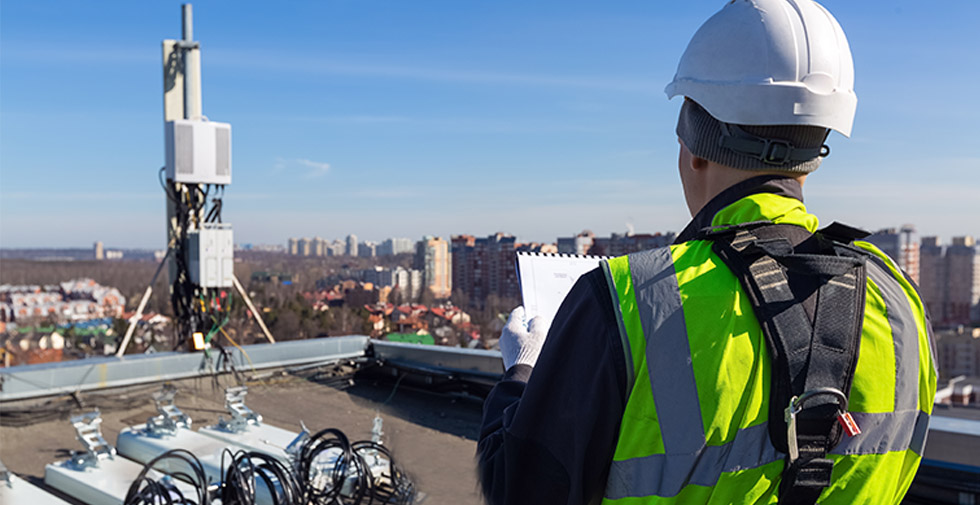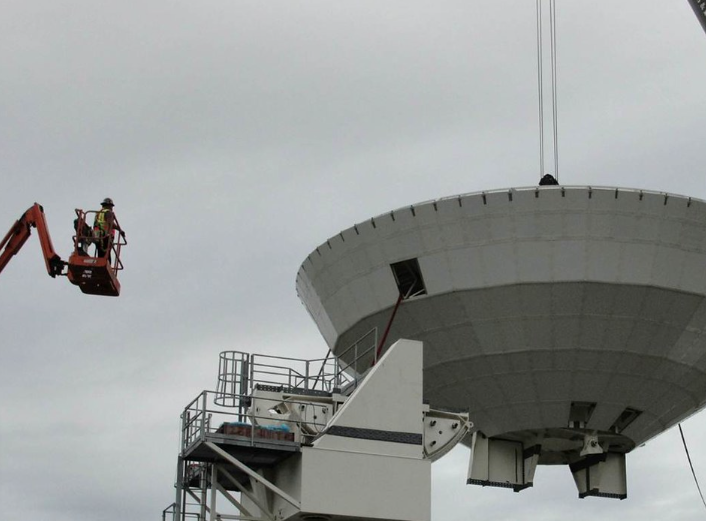
Telecommunications Rigging
Industry Leading Telecommunications Rigging Services
The telecommunications sector includes telephone companies, cable companies, internet service providers, and satellite businesses. These companies created the technical framework that enables the transmission of data in the form of text, voice, audio, and video throughout the world.
The major businesses in the industry include telephone providers (landline and wireless), satellite providers, cable providers, and Internet service providers. The three primary subsectors of telecommunications are wireless communication, telecom services, and telecom equipment.

Rigging for Telecommunications
Rigging is the process of moving, stabilizing, and securing a payload while using the proper mechanical shifting gear. Riggers utilize tools like cranes and hoists or other equipment like chain blocks and winch systems to move a load. A rigger must take into account a variety of considerations when transferring a load, which can be a complicated process. Before lifting an object, they must be aware of the most precise and safest manner to move it. This is necessary for a wide variety of industries when large, heavy, and oddly shaped things need to be moved, and telecommunications is no exception.
Telecommunications rigging is the application of these same principles within the telecom industry. Installing, maintaining, and repairing telecommunications equipment are all responsibilities of a telecommunications rigger. This can entail setting up and keeping up communication systems like telephone and internet cables, in particular the large towers, antennas, and other equipment that allow for the transmission of data. For modern life to function well, telecommunications equipment must be maintained, and a rigger for telecommunications is a critical component.
Functions of Telecommunications Rigging Companies
Telecommunications rigging can be involved in various stages of telecom operations. There are three main areas where Murphy Rigging most often provides services.
Telecommunications Setup
The setting up of any device, mechanism, building, tower, antenna, tunnel, manhole, pit, or hole used, or intended for use, in connection with a telecommunication service is referred to as a telecommunication installation. For telecommunications rigging companies, telecom building is primarily the moving and setup of the large, heavy parts of this network.
Telecommunications Maintenance
All current communications traffic goes through a physical medium called telecommunications infrastructure. This comprises phone lines, cables (including undersea cables), satellites, microwaves, and mobile devices like fifth-generation (5G) mobile networks, as well as the towers and antennas that support them. Telecom maintenance is the upkeep and improvement of this infrastructure.
Telecommunications Decommissioning
Decommissioning a telecommunications network involves shutting down and removing any outdated network and associated cables, switches, and other network hardware, as well as the large components that support this network, such as towers, poles, and antennas.
Other Telecommunications Services
Specific aspects of telecommunications rigging work include the following;
- Installing telecommunications equipment and cable
- Tower-mounted equipment installation, relocation, and removal
- Using cherry pickers, cranes, and MEWPs when needed
- Working at a height to install antennas, feeds, and associated equipment on a variety of telecommunications structures, such as poles, towers, and masts
- Erecting and attaching steel structures to make it easier to install communications equipment
- Termination of various types and sizes of telecommunications cables
- Cable testing to ensure they meet the requirements
Why Work With a Telecommunications Rigging Company
Working with professional telecommunications rigging companies to aid with your telecom installations and repairs has several benefits. Murphy Rigging can provide experienced rigging solutions for all aspects of your telecom rigging, including antenna construction, cell cabinet rigging, tower erection, and platform placement. For single-job installations as well as multi-location projects, Murphy Rigging has lift equipment rentals and skilled equipment operators available to see your project through to completion.
Working with a business that can offer you the services you require while satisfying the requirements of your industry is essential. Only a proven telecommunications rigging company should perform your rigging for communications systems. With a substantial fleet of machinery and a team of knowledgeable operators, Murphy Rigging delivers on that experience.
To discuss your project, reach out to our team and have a detailed discussion so we can determine the best strategy for you. Use the links below to provide the details, or call today to start the discussion.
